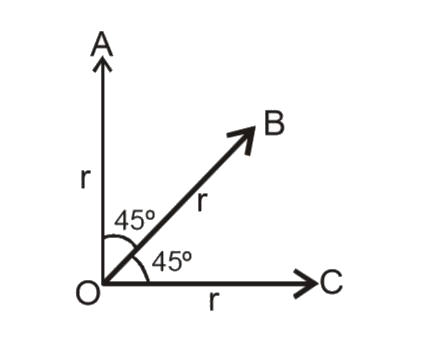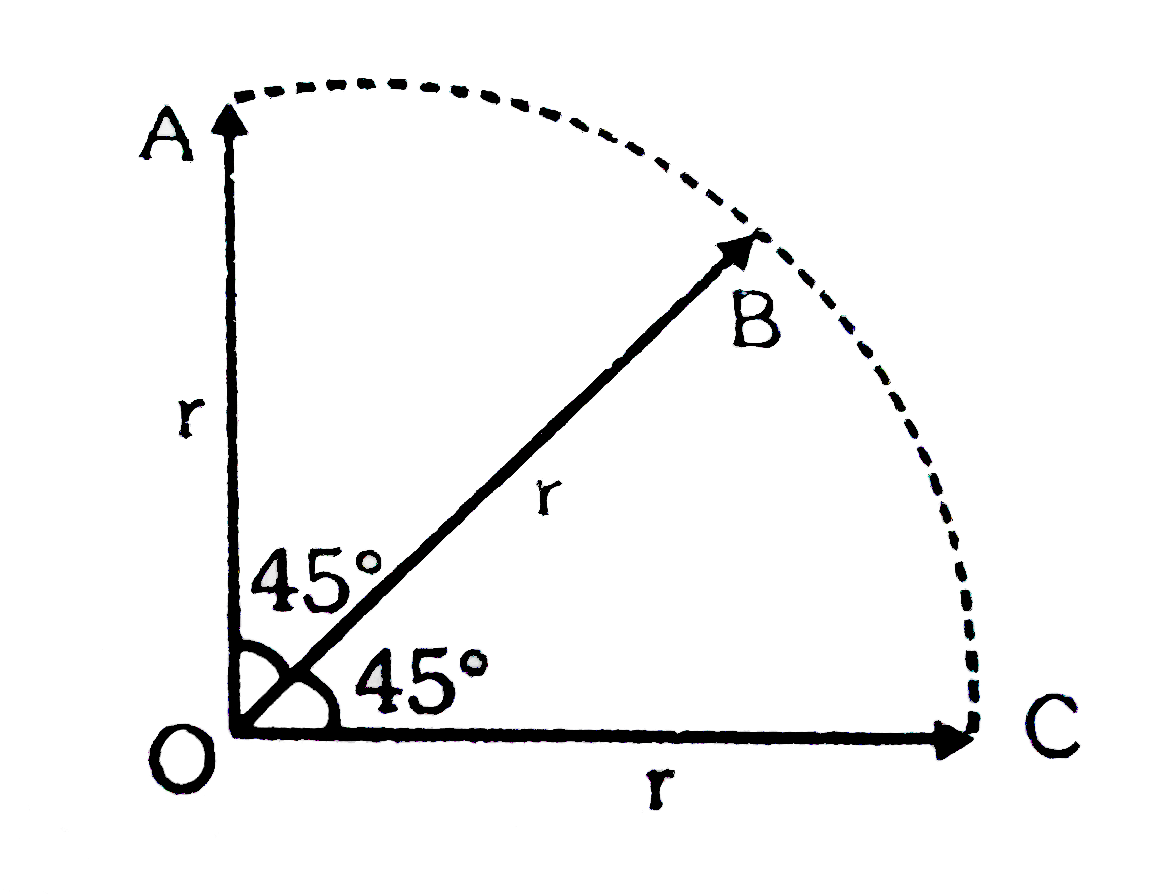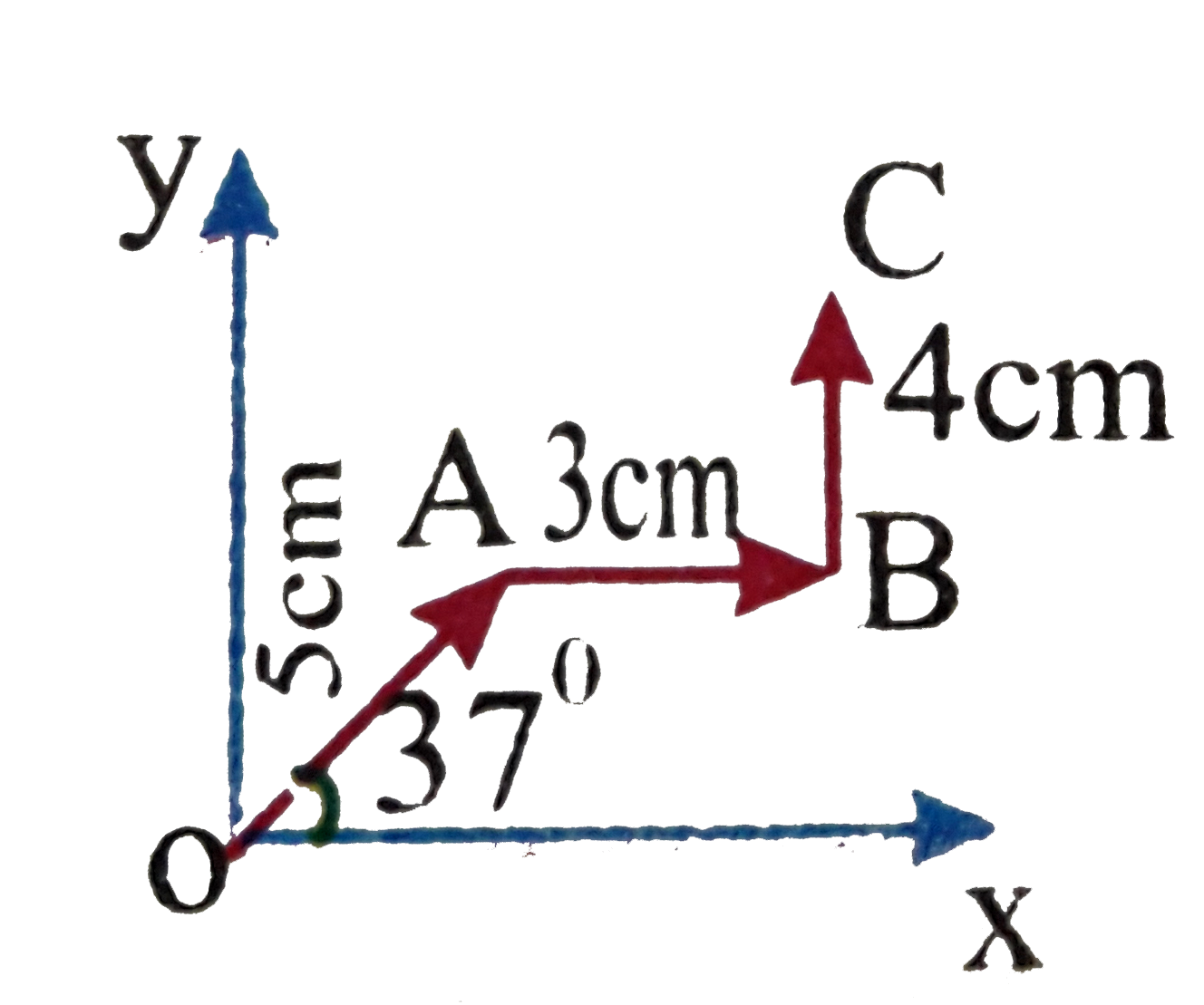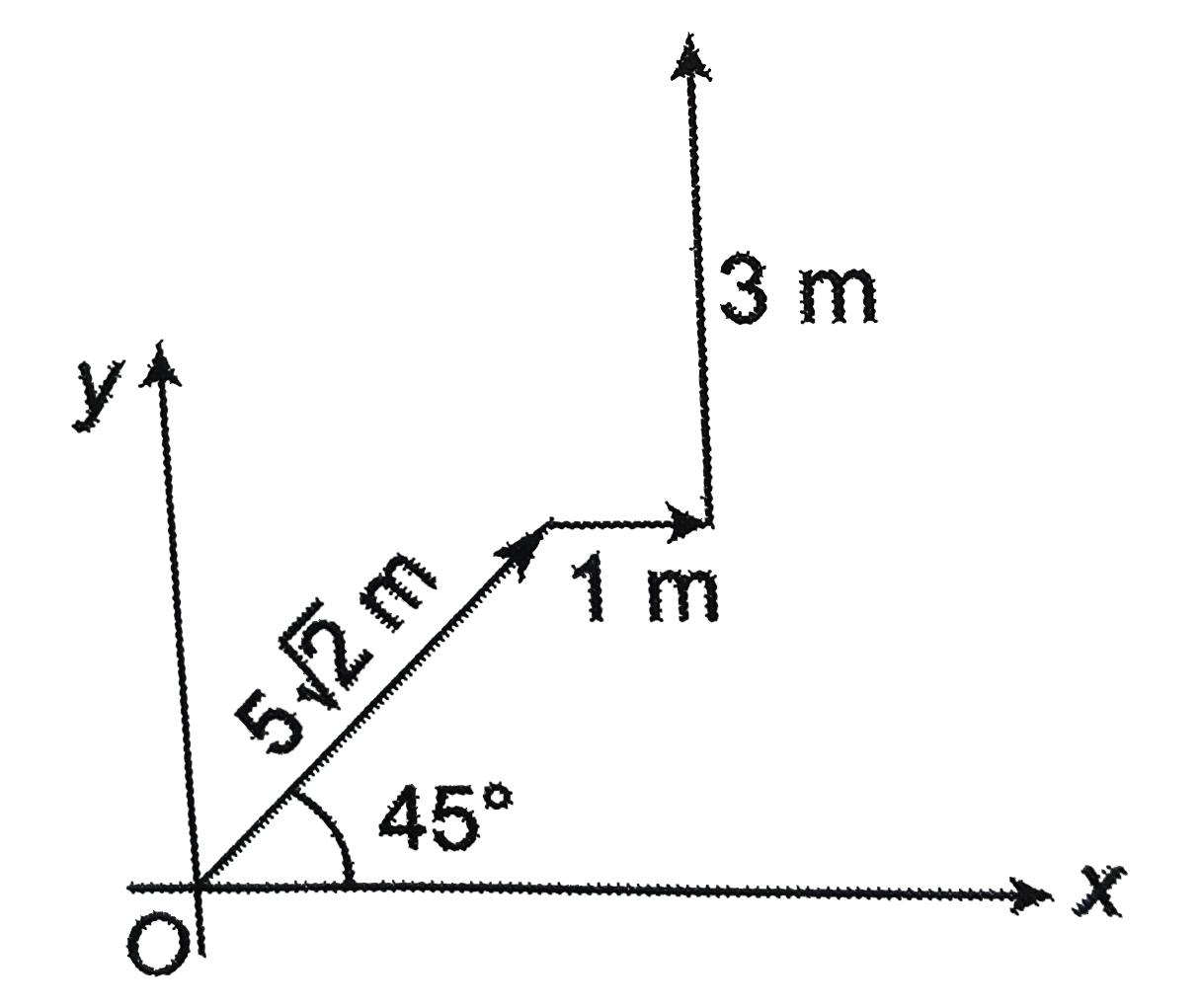Find the resultant of three vectors →OA,→OB,→OC each of magnitude r as shown in figure.

r(1−√2)
2r(1+√2)
r(1+√2)
2r(1 - sqrt(2))
The correct Answer is:C
Topper's Solved these Questions
- VECTOR & CALCULUSBOOK - MOTIONCHAPTER - VECTOR & CALCULUSEXERCISE - EXERCISE -2 (LEVEL - II) MULTIPLE CORRECT
13 Videos
- VECTOR & CALCULUSBOOK - MOTIONCHAPTER - VECTOR & CALCULUSEXERCISE - EXERCISE -3 (LEVEL - I) SUBJECTIVE
15 Videos
- VECTOR & CALCULUSBOOK - MOTIONCHAPTER - VECTOR & CALCULUSEXERCISE - EXERCISE -1
76 Videos
- VECTOR BOOK - MOTIONCHAPTER - VECTOR EXERCISE - Exercise - 3
18 Videos
- WAVE MOTION BOOK - MOTIONCHAPTER - WAVE MOTION EXERCISE - Exercise - 3 Section - B (Previous Years Problems)
7 Videos
Similar Questions
Find the resultant of the three vectors →OA,→OB and →OC each of magnitude r as shown in figure?
View SolutionFind the resultant of the three vector O→A,O→B and O→C of magnitude r as shown in figure.

View SolutionFind the resultant of the three vector O→A,O→B and O→C of magnitude r as shown in figure.

View SolutionFind the resultant of the vectors shown in figure.

View SolutionFind the resultant of the vectors shown in figure.

View SolutionFind the resultant of three vectors shown in the figure.

View SolutionFind the resultant of three vectors shown in the figure.

View SolutionFind the resultant of the three vectors −−→OA,−−→OB and −−→OC shown in figure. Radius of the circle is R.

View SolutionFind the resultant of the three vectors −−→OA,−−→OB and −−→OC shown in figure. Radius of the circle is R.

View SolutionFind the resultant of the three vectors −−→OA,−−→OB and −−→OC shown in figure. Radius of the circle is R.

View Solution
